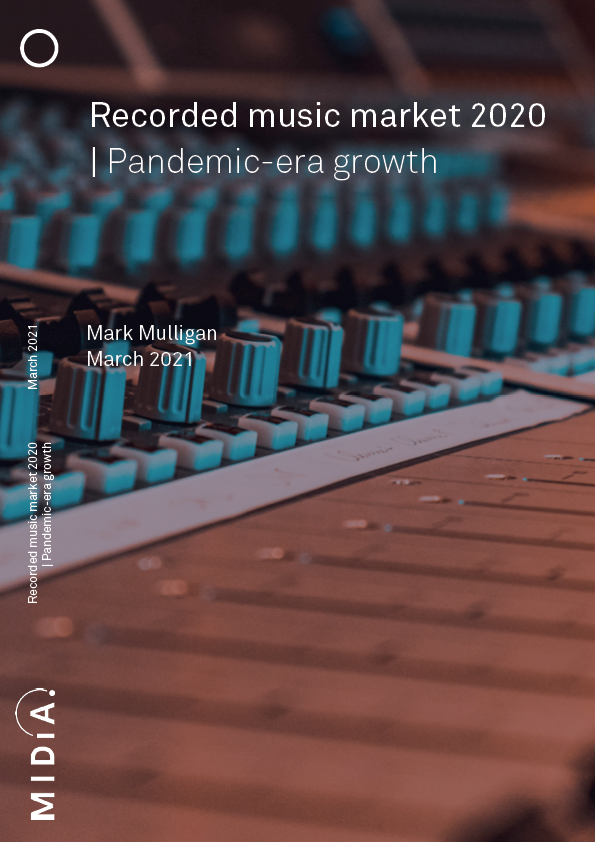Recorded music market 2020 Pandemic-era growth

Get full access to this report and assets
Already a MIDiA client? Login here to view this report.
New to MIDiA? Get in touch with our client success specialists to purchase this report and gain a competitive edge today.
The 20,000 Foot View: The global pandemic turned the music industry upside down. While live was decimated throughout 2020, after an initial downturn, the recorded music market returned to growth and finished the year with an acceleration that suggests a strong 2021 lies ahead.
Key Insights
- Recorded music grew to billion in 2020 a pandemic slowdown. Revenues were and billion compared to growth billion and in 2019
- In 2020, revenues were down year-on-year (YoY) by were up suggesting a 2021 if that momentum is
- Streaming was the key source of growth, to reach billion, representing of label revenues, although the majors a group grew slightly slower the market
- For the successive year, the major labels streaming revenue increase by less the prior year, up billion 2020 compared to billion in
- Sony Music the fastest major label streaming up while artists direct increased revenue by
- Streaming was only revenue source to grow 2020 with other revenue (predominately and sync) down by in hit hard by the pandemic
- The major saw collective market share fall in 2019 to in 2020 artists direct the main beneficiary, market share to
- Sony Music the fastest growing major, increasing by to reach billion
Companies and brands mentioned in this report: ADA, AWAL, Sony Music, The Orchard, Universal Music Group, Virgin Music Label & Artists Services, Warner Music Group
Methodological notes:
All revenue values referenced in this report are in USD with all conversions from local currencies calculated taking the average quarterly exchange rate for each quarter of the year. No constant currency values are used in this report.
Independent revenue is measured on a distribution basis, not an ownership basis. Therefore, independent revenue that is distributed via a major record label or a wholly owned major label distributor will appear in the revenue of the respective major record label.
